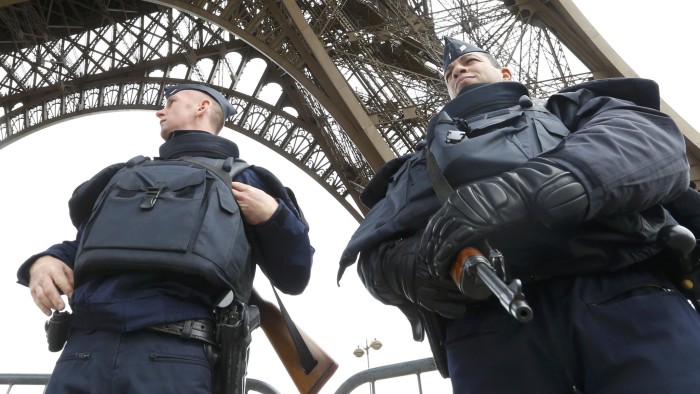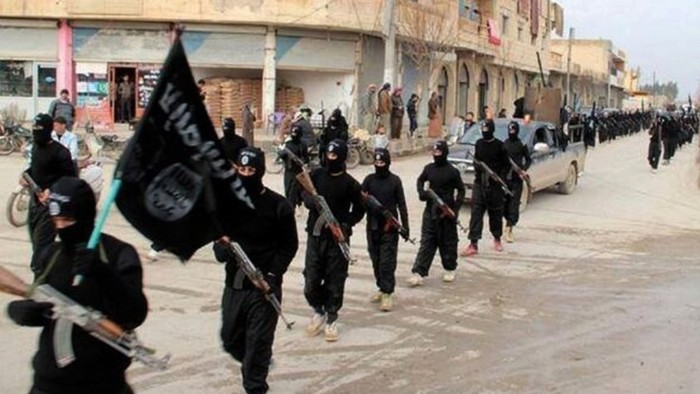Paris attacks: security services struggle in terrorist battle

Roula Khalaf, Editor of the FT, selects her favourite stories in this weekly newsletter.
It has been an axiom of counter-terrorism work in the post 9/11 era that the bigger and more intricate the plot, the more likely it will be detected.
The rampage in Paris of at least seven trained gunmen, targeting multiple, carefully selected locations in a timed series of attacks — using automatic weapons and suicide vests — is the most complex foreign-planned Islamist attack on the west since the World Trade Center atrocities. It is also the most lethal since the Madrid train bombings of 2004.
Why then was it not detected? The question has a particular resonance 10 months on from the Charlie Hebdo murders and the wide-ranging reinforcement of French intelligence and security services.
It is also 18 months since the Jewish museum shootings in Belgium, an event that European security authorities promised would lead to far greater co-operation between governments in stopping jihadi violence on the continent.
“In January, the [Hebdo] attacks had a dose of amateurism, but here it’s an attack that was planned. It is sophisticated, done by professionals. Suicide attacks are a first,” said Jean-Charles Brisard, a consultant on Islamist terrorism.
One European security official, who stressed that the intelligence picture around events in Paris was still far from clear, said there could be little doubt that the attack involved “weeks” of meticulous planning.
Part of the problem is the sheer scale of the threat that the French, in particular, are trying to contain. Ruling out such a threat from a huge range of potential suspects is a mammoth task.
About 571 French nationals are fighting for Isis or other terrorist organisations, Bernard Cazeneuve, French interior minister, estimated this month. Up to 141 have died there and about 246 have returned to France, he said.
Those that make it to the Levant are in many ways the tip of the iceberg: 2,000 French citizens are thought to be involved in jihadi cells in France, according to the government, while 3,800 individuals are showing signs of Islamist radicalisation.
All of which, however, only goes so far in explaining why events in Paris unfolded with such deadly ease.
The reality is that the jihadi terror threat posed by Isis is rising and evolving at a rate with which European intelligence agencies cannot keep pace.
Paris attacks: bloody atrocity signals shift in Isis strategy

Jihadi group steps up level of terror with co-ordinated attacks
Read more
Isis’s central command is now taking a far greater interest in attacking Europe; the level of jihadi propaganda and its motivational efforts is at fever pitch; the domestic social networks that spawn radicals are deepening; communications between terror cells are harder than ever to crack into because of increasing encryption online; and international co-operation — particularly when it comes to sharing vital raw intelligence — is still only superficial.
Some of these are long-term problems that require broad social and political shifts. Some are far beyond the immediate control of counterterror chiefs and politicians. But some are not. While Europe’s violent jihadis are fighting as one body, for one cause, Europe’s security authorities are still at odds.
“Intelligence sharing is really at the heart of the challenge in Europe,” said one senior Brussels-based diplomat who declined to be named. “There has been a lot of work, particularly after Charlie Hebdo, but it has stalled.”
Isis’ ability to motivate Muslims who previously may just have been peripheral figures in known radical groupings — as was Omar Ismael Mostefai — or even individuals with no known history of terrorist-sympathies — is at the heart of the intelligence challenge. It confounds the existing counterterror methodologies for France’s DGSI and its sister agencies around Europe, which are based on systems of assessments and prioritisation.
To better understand the threats, intelligence agencies need to harness all the data and information they can. That means taking in disparate, cross-border snippets of information, such as the arrest of a man travelling to Paris with guns in Germany last week, or the uptick in activity of Belgian radicals in Molenbeek and producing a “heatmap” or teasing out developing trends, one senior British intelligence official explains.
Inside Isis Inc
How the terrorist group funds its operations with oil

Spies speak of living in an age of big data and its relevance in the fight against Isis. In Europe, though, while these is plenty of data, it is all stored in different silos.
Efforts to share even the most obvious information have been stymied by political disagreements. After the Charlie Hebdo attacks, a law was drafted for the systematic collection and retention of Passenger Name Records (PNR) for all flights into and out of the EU. It still has not passed.
“We have open borders but not open information,” said the Brussels-based diplomat. “It’s not possible for that to continue.”
Comments